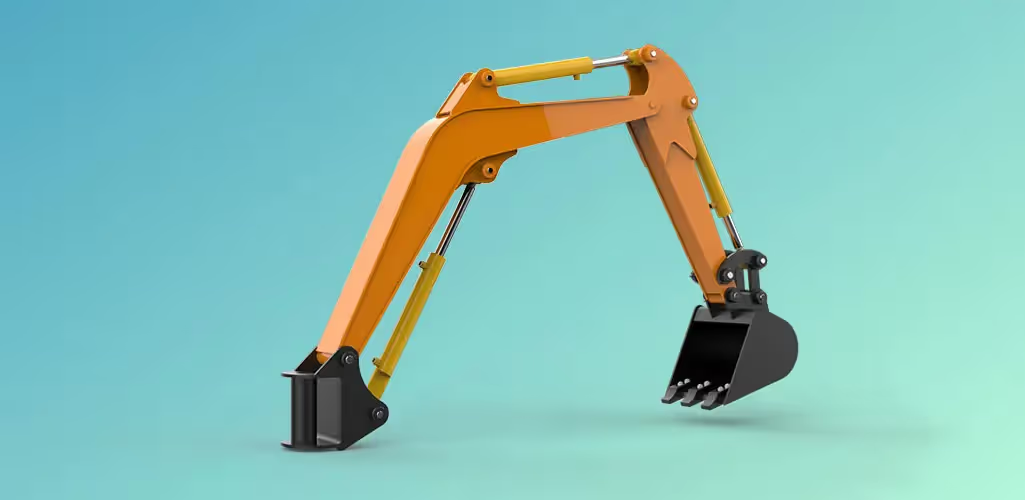Download Centre

Looks like you don't have ESC button on your device
Download IronCAD DCS
Choose one of the following options
trial versionHas a license

Emil Rindell

Jonas Bryntesson

Henrik Andersson
2025-05-06

Emil Rindell

Jonas Bryntesson

Henrik Andersson
2025-05-06
If you are interested in getting a kinematic movement/mechanism on models, it is required in IRONCAD, just like in all other 3D software*, that you place locked relationships in the form of constraints between the models. This is not something you spend time on in everyday work**, but is required to get movements in this way.
We have developed a number of exercises that show how to do this. First out is a simple exercise with four parts that is already ready to test via a "Tutorial" and ready-made models in a catalog that you already have on your computer.
In this video, you will first test a finished model, then assemble it and add constraints between the parts, before finally driving it with an animation.
We have also produced a short series of four episodes using the parts of an excavator arm as an example.
Download the sample model here.
Positioning Constraints - learn more at IronCAD Academy, Commands.
Mechanism Mode - learn more at IronCAD Academy, Commands.
*For those who may wonder how these rules are defined, IRONCAD uses a software component from Siemens D-Cubed 3D Dimensional Constraint Manager (3D DCM), which is the same as used in several other well-known 3D CAD systems, such as SolidEdge and SolidWorks. The same applies to the sketch constraints, which are based on Siemens D-Cubed 2D DCM.
**One of several reasons why everyday work goes so much faster in IRONCAD compared to traditional 3D CAD systems is that we "do not have to" place, think about and administer relationships and locking in the form of constraints between objects in order for the CAD system itself to work in a predictable way and "as intended". But to be able to test mechanisms in the form of kinematic movements between the 3D models, these relationships/constraints are required.
Answer: Here we publish tips, guides, news and solutions for those who work with IRONCAD and Design Data Manager (DDM). The blog covers everything from basic functions to advanced workflows, helping you to optimize your design work. You'll find examples of smart shortcuts, practical instructions, solutions to common problems, and best practices for product design, mechanical design, and product data management.
Answer: Our guides and tips are designed for both beginners and experienced CAD users. They are aimed at designers, engineers and project managers who want to work more efficiently with IRONCAD and DDM, improve the design process, reduce mistakes and save time in product development.
Answer: We regularly publish new articles when the software is updated, when new features are introduced, or when our users ask for solutions to specific problems. The blog is therefore a reliable source for keeping up to date and getting tips that make everyday CAD work easier.
Answer: Many of our instructions and tips work in multiple versions, but we clearly indicate if an article applies to a specific version. We strive to make the content useful for older versions as well, and also provide recommendations on how to adapt workflows to the version you are using.
Answer: Absolutely! If you can't find the solution in the blog, you can contact our technical support via solidmakarna.support. Our experts will help you with everything from installation and configuration to advanced features in IRONCAD and DDM, so you can solve problems quickly and efficiently.
Answer: Yes! We appreciate suggestions from our users. If you have questions, tips or want us to address a specific issue in IRONCAD or DDM , please contact us via our contact form and we will prioritize relevant topics in future posts.
Answer: The blog contains, among other things:
Practical step-by-step guides to help you use IRONCAD and DDM more effectively.
Productivity and workflow tips for faster design and construction.
Solutions to common problems encountered by users in CAD programs.
Updates and news on new features, versions and improvements.
Best practices for data management and project organization in DDM.
Answer: All tips and guides are directly applicable in daily work. For example, you can use shortcuts and smart features in IRONCAD to speed up modeling, structure files better in Design Data Manager, or follow our step-by-step solutions for specific problems that often come up in design projects.
Answer: We strive to ensure that all guides and tips are relevant to the latest versions of IRONCAD and DDM. We also clearly mark when a post applies to an older version, so you always know if the instruction is directly applicable to your system.
Answer: Yes! Many of our users share the articles with colleagues and use them as internal training materials. The blog is a great complement to formal training and helps teams learn features faster, avoid mistakes, and standardize workflows in IRONCAD and DDM.